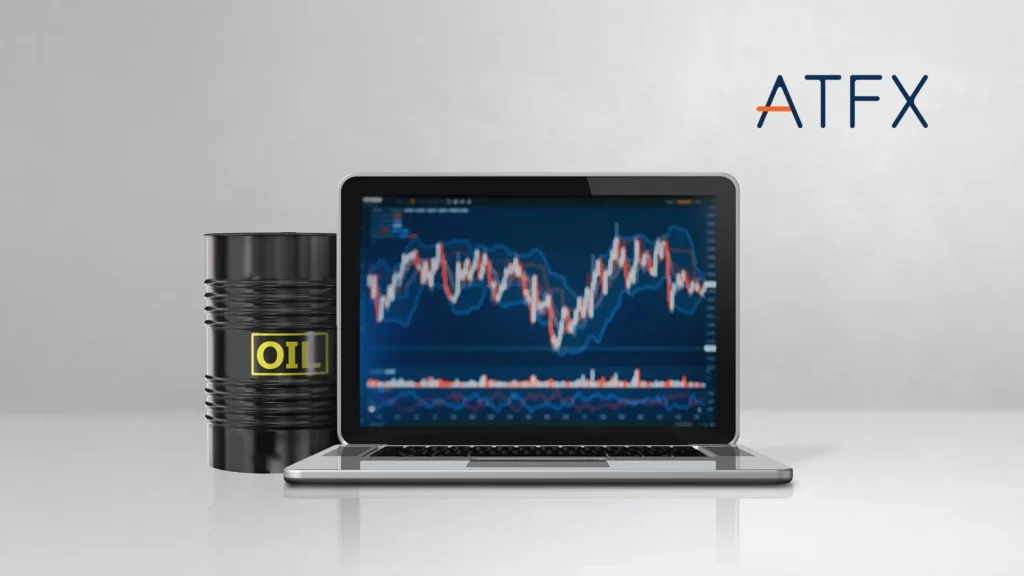Introduction to Crude Oil Types
Crude oil, sometimes known as “black gold,” is a naturally occurring fossil fuel that has become an essential commodity in modern civilisations. It is the primary raw ingredient for gasoline, plastics, chemicals, and many other items that support daily living and industrial activities. With rising global energy demands, crude oil fuels everything from transportation to electricity generation, making it essential to the operation of most economies. The world consumes around 100 million barrels of oil daily, with demand split between transportation, industrial activities, and domestic energy demands.
Brent and WTI (West Texas Intermediate) are the two most commonly used forms of crude oil. Their enormous effect on price and market trends demonstrates their significance, with each variety reflecting unique regional market dynamics and refining features.
What is Brent Crude?
UK Brent Oil Futures Contract (CFD), the UKOIL.MMMYY is a CFD product reflecting the value of UK Brent Oil, and it’s one of the most widely recognised oil benchmarks globally. It was named after the Brent crude oil deposits between the United Kingdom and Norway in the North Sea. This crude oil is called “sweet” because of its low sulfur levels, making it excellent for refining into gasoline and diesel. Brent crude’s geographical origin and robust quality have helped to establish it as a critical benchmark for oil prices in Europe, Africa, and the Middle East. Nearly two-thirds of the world’s crude oil contracts are priced using Brent crude, demonstrating its importance in the global energy market.
For example, due to its ties to European markets, Brent crude prices frequently affect fuel costs throughout Europe and Africa. In times of geopolitical unrest in the Middle East, Brent prices can surge quickly because of worries about supply, affecting everything from gasoline prices to heating oil expenses.
What is WTI?
US WTI Oil Futures Contract (CFD), the USOIL.MMMYY represents a CFD product based on the value of WTI oil, a prominent benchmark primarily produced in U.S. oil fields across Texas, Oklahoma, and nearby states. WTI is lighter and sweeter than Brent, with even lower sulfur levels. This makes it perfect for gasoline manufacturing, and it is frequently preferred in U.S. markets. WTI crude oil is priced primarily on the New York Mercantile Exchange (NYMEX), and its price is a reliable indication of U.S. oil market movements.
Example: WTI pricing directly influences gasoline prices across the United States. For instance, during COVID-19, U.S. demand fell sharply, forcing WTI prices to collapse to historic lows. The drop in WTI prices temporarily reduced gasoline prices for American consumers.
Brent vs WTI, What are the Key Differences?
Geographic Source and Market Influence
WTI crude oil is predominantly supplied from oil fields in the United States, particularly in Texas, Oklahoma, and the adjacent areas. WTI is more significant to the U.S. market since it is extracted locally and is actively watched as an indicator of U.S. oil supply and demand trends. The oil is shipped to Cushing, Oklahoma, a critical storage facility with broad pipeline connectivity throughout the country. Because of its local production and distribution points, WTI prices often correspond more closely to market circumstances in the United States.
Brent crude oil is sourced from oil fields in the North Sea between the United Kingdom and Norway. Brent oil price serves as a worldwide benchmark, influencing markets in Asia, Africa, and Latin America. This gives Brent a broader global reach than WTI, making it the go-to benchmark for setting prices on international oil exports and contracts, particularly in regions outside the United States.
Quality and Refining Characteristics
Density and API Gravity: WTI is classified as a “light” crude oil because of its low density. It has an API gravity of around 39.6, making it one of the lightest forms of oil accessible. While likewise classed as light crude, Brent has a slightly lower API gravity (about 38), making it somewhat denser than WTI.
Sulfur Content: WTI and Brent are classified as “sweet” because of their low sulfur level. However, WTI is much sweeter than Brent, with roughly 0.24% sulfur content compared to approximately 0.37% for Brent. Lower sulfur levels make both crudes easier to process and suitable for gasoline and diesel production. However, WTI’s much lower sulfur content gives it a slight edge in terms of refining ease and preference for producing high-quality gasoline, especially within the U.S.
For example, WTI is lighter and sweeter, and refining it into gasoline in the U.S. is often preferred, leading to more localized gasoline prices tied to WTI. In contrast, Brent’s slightly heavier and sourer properties align it more with Europe’s diverse oil needs, including diesel production.
Price Differences and the WTI-Brent Spread
Historical Price Differences: WTI frequently trades at a slight discount to Brent, owing to geographical and logistical considerations. The average price gap, known as the “WTI-Brent spread,” can vary from a few dollars to more than $10 per barrel, depending on market circumstances. For example, in 2011, the WTI-Brent gap expanded dramatically owing to transportation delays in the United States, forcing the WTI to trade at a substantial discount to Brent.
Market Influences on the Spread: WTI prices are significantly impacted by the United States’ supply and storage capacity. If U.S. oil production increases while domestic demand or export capabilities remain limited, the WTI price may drop relative to Brent. On the other hand, Brent is more sensitive to foreign variables like Middle Eastern wars, OPEC production choices, and European refinery demand.
Current Trends: The WTI-Brent differential is more balanced now, thanks to upgraded pipeline infrastructure in the United States and increased export capacity. However, events like hurricanes damaging Gulf Coast refineries or geopolitical tensions can still produce short divergences.
Learn why Brent Crude is more expensive than US crude.
Transportation and Storage Factors
WTI: Transported mainly through an extensive pipeline network across the U.S. to the storage hub in Cushing, Oklahoma. This domestic pipeline network has generally limited WTI’s global availability, although recent years have increased U.S. crude exports due to expanded infrastructure. Storage constraints at Cushing can significantly impact WTI prices. For example, in April 2020, when storage at Cushing filled up, WTI futures fell owing to a shortage of accessible storage.
Brent: Brent crude, produced offshore in the North water, is mostly carried by water, making it more adaptable to international shipping and commerce. This sea accessibility allows Brent to be distributed more easily across continents, contributing to its prominence in the global market. The maritime transport nature of Brent allows it to serve as a better benchmark for international crude oil contracts.
For example, the 2020 oil price collapse highlighted the challenges of WTI storage, while Brent remained more stable due to its international transport flexibility.

Market Influence and Global Reach
WTI: Primarily used as a U.S. market pricing benchmark, it directly influences domestic gasoline and oil prices. Because of its limited geographic reach, WTI is less exposed to global geopolitical events. However, U.S. policies, natural disasters, and domestic production changes directly impact WTI prices.
Brent: Brent crude’s worldwide reach is more significant due to its status as a global benchmark. Its price frequently reflects worldwide supply and demand dynamics, such as OPEC decisions, Middle Eastern geopolitical events, and European demand swings. This makes Brent crude a much stronger predictor of the global oil market, Hence, it is a benchmark for more than two-thirds of worldwide crude contracts.
For example, Middle Eastern tensions, like those surrounding Iran and Saudi Arabia, often cause spikes in Brent prices due to concerns over oil supply disruptions. Such tensions generally don’t affect WTI as directly, as it’s more insulated within the U.S. market.
How to Trade Crude Oil and WTI
Trading crude oil, such as WTI and Brent, is a common technique for investors who want global crude oil market exposure. Here are several conventional ways to trade these commodities:
CFDs (Contracts for Difference): CFDs allow traders to bet on oil price swings without owning the underlying asset. This is especially popular in Europe, where platforms like ATFX allow traders to leverage their bets and profit from rising and falling prices. Investors can trade the UK BRENT Crude Oil Futures Contract (CFD): UKOIL.MMMYY and the US WTI Crude Oil Futures Contract (CFD): USOIL.MMMYY.
Futures Contracts: Futures contracts are the most direct option, allowing traders to purchase or sell oil at a predetermined price on a future date. WTI futures are typically traded on the NYMEX, whereas Brent futures are traded on the Intercontinental Exchange (ICE). Because of the volatility of oil prices, futures trading requires traders to have a high-risk tolerance.
Learn how to trade crude oil futures & options.
ETFs (Exchange-Traded Funds): ETFs provide a more accessible entry point for investors wishing to trade oil without immediately entering into futures contracts. Examples are the United States Oil Fund (USO) for WTI and the Brent Oil Fund for Brent oil.
Oil Company Stocks: Investors can also obtain indirect exposure by purchasing shares in oil firms, whose profits are frequently linked to oil prices. Companies such as ExxonMobil, Chevron, and B.P. are affected by WTI and Brent price changes.
For example, oil prices may rise during peak demand periods, such as winter in the Northern Hemisphere. Traders could profit from projected price rises by leveraging seasonal swings through futures or CFDs.
Learn how to trade crude oil for beginners.

The Main Oil Benchmarks
WTI and Brent are not the only benchmarks in the global oil market. Other significant ones include:
Dubai/Oman Crude: Dubai/Oman crude is heavier and sourer than Brent and WTI, making it a regional benchmark for Persian Gulf oil.
OPEC Basket: The OPEC Basket is an average of prices from OPEC member nations used to track worldwide supply and demand within the organization.
These benchmarks help standardise oil prices across locations and quality, bring transparency to global markets, and direct supply chain choices.
Conclusion
Understanding the distinctions between WTI and Brent crude oil is critical for anybody interested in the global energy industry. While WTI substantially impacts U.S. markets, Brent plays a vital role in Europe, Africa, and beyond. Both are necessary for price fixing but react differently to global events such as geopolitical conflicts and supply-demand fluctuations. These benchmarks allow traders to capitalise on market dynamics via futures, ETFs, CFDs, or oil company stocks.
Trade Brent Crude Oil and WTI with ATFX
ATFX is an easily accessible platform for trading crude oil using Contracts for Difference (CFDs). ATFX allows traders to bet on the WTI and Brent crude price swings without physically buying the oil. This flexibility allows traders to profit from rising and falling oil prices while leveraging their holdings for maximum rewards. ATFX’s platform also provides risk management tools, competitive spreads, and professional-grade market research to help traders of all skill levels.




